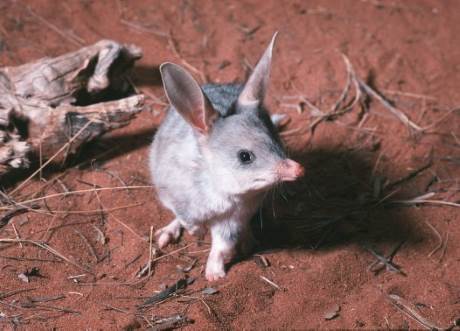The Kintyre uranium project in Western Australia has received environmental approval from the country's federal government.
 |
| The Great Bilby: any development at Kintyre must ensure that steps are taken to protect several threatened species (Image: Howard Hughes/Australian Museum) |
Federal environment minister Greg Hunt's approval is conditional on the development meeting various environmental, radiation and other criteria. Although the approval does not expire until 2045, development must begin within five years. Beyond that time, further ministerial agreement would be required.
The conditions attached to the project include restrictions on the extent of land that may be disturbed, as well as the preparation of an environmental management plan which must include a strategy for the eventual closure of the mine. The plan must also address conditions relating to radiation exposures, ground and surface water and the protection of terrestrial fauna, notably the Greater Bilby, the Mulgara and two types of rock wallaby. The developers are required to comply with strict reporting conditions and to make environmental data publicly available.
Kintyre, which is owned 70% by Cameco Australia and 30% by Mitsubishi Development, received approval from the Western Australian environment minister in March.
Western Australia's minister for mines and petroleum Bill Marmion welcomed the federal approval and congratulated operator Cameco Australia on reaching a "significant milestone" in the project's development. With four uranium projects - Wiluna, Yeelirrie, Mulga Rock and Kintyre - now in the advanced stages of development, Marmion said the latest approval was important for the state's uranium industry.
Marmion noted that more than AUD 300 million ($234 million) had been invested in uranium exploration in Western Australia since 2008. "With positive signs for a price recovery, including recent progress on an export agreement between Australia and India, these mines could be exporting AUD 1 billion ($780 million) worth of uranium by 2020," he said.
Cameco Australia managing director Brian Reilly welcomed the ministerial decision and said the company would ensure that all the regulatory conditions are met. The company does not intend to develop the project until market conditions warrant that but it is taking steps to ensure its Australian operations are poised for action when this happens. "For Kintyre, this means continuing to build strong relationships with stakeholders and identifying additional resources to improve the economics of the project," he said.
Cameco and Mitsubishi acquired Kintyre from Rio Tinto in 2008. The project has measured and indicated mineral resources of about 55 million pounds U3O8 (21,156 tU) and is amenable to open pit mining techniques.
Researched and written
by World Nuclear News




_30199.jpg)
_72306.jpg)

_49562.jpg)





